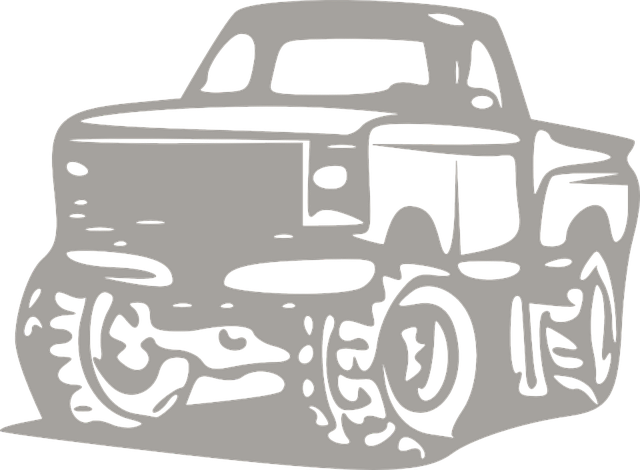RGV (Recovered Ground Vehicle) wheels are eco-friendly, durable solutions for construction, military, and industrial sectors, offering enhanced traction, stability, and safety through their unique design. They incorporate recovery lines that mitigate wear, maintain optimal tire pressure, and prolong lifespans. RGV wheels, with their specialized grooved patterns, excel in material handling, increasing efficiency and equipment lifespan. Ideal for challenging terrain recovery, they feature customizable designs suitable for emergency services, construction, and off-road operations. Proper installation and maintenance through adherence to guidelines ensure peak performance and longevity of RGV wheel's recovery lines.
“Discover the transformative power of RGV Wheels in recovery operations. This comprehensive guide delves into the intricate world of recovery lines, exploring their pivotal role in wheel maintenance. From Understanding RGV Wheels and their unique advantages to unraveling the variety of recovery line types and their specialized applications, this article is your one-stop resource. Learn about the tangible benefits of integrating RGV Wheels into your recovery regimen and master best practices for efficient installation and maintenance.”
- Understanding RGV Wheels: A Comprehensive Overview
- The Role of Recovery Lines in Wheel Maintenance
- Types of Recovery Lines and Their Applications
- Benefits of Using RGV Wheels for Recovery Operations
- Best Practices for Installing and Maintaining Recovery Lines
Understanding RGV Wheels: A Comprehensive Overview

RGV wheels, short for Recovered Ground Vehicle wheels, are designed for specialized applications where durability and versatility are paramount. These wheels are crafted from recycled materials, making them an eco-friendly choice while offering robust performance in challenging environments. The manufacturing process involves transforming used tires into high-quality wheel components, ensuring they meet strict safety and quality standards. RGV wheels excel in various sectors, including construction, military, and industrial applications, where their resistance to wear and tear is highly valued.
The unique design of RGV wheels incorporates advanced engineering principles to enhance traction and stability. They are built to withstand extreme conditions, providing excellent grip on uneven surfaces and rough terrain. This makes them a preferred choice for vehicles operating in harsh environments, ensuring optimal performance and extending the lifespan of equipment. With their sustainable production method and exceptional strength, RGV wheels represent a cutting-edge solution for reducing waste while meeting the demands of demanding industries.
The Role of Recovery Lines in Wheel Maintenance

Recovery lines play a pivotal role in maintaining the health and performance of RGV (Recreational Go-karting Vehicle) wheels. These specialized lines are designed to address the natural wear and tear that occurs during intense racing or recreational use. Regularly inspecting and replacing recovery lines is essential for several reasons, including preventing excessive wheel damage and ensuring optimal tire pressure.
By acting as a safety net, recovery lines help absorb shocks and vibrations, reducing the stress on wheel components. This is particularly crucial in RGVs, where high-speed cornering and aggressive driving can quickly deteriorate wheels. Well-maintained recovery lines contribute to extended wheel lifespans, better handling, and improved overall driving experience for go-kart enthusiasts.
Types of Recovery Lines and Their Applications

Recovery lines, a vital component in various industries, come in diverse types tailored for specific applications. One prominent category is the RGV (Recirculating Grooved Vehicle) wheels recovery line. These wheels are designed for efficient material handling, especially in heavy-duty industrial settings. Their grooved pattern enhances grip, making them ideal for transporting bulky or slippery loads without slippage.
RGV wheels find extensive use in construction sites, warehouses, and manufacturing facilities where robust and reliable material movement is paramount. They offer numerous advantages, including increased safety by reducing the risk of load shifts, improved efficiency through smoother rolling, and extended equipment lifespan due to their durable design. This makes them a preferred choice for professionals seeking efficient and dependable recovery solutions.
Benefits of Using RGV Wheels for Recovery Operations

Using RGV (Recovery and Grading Vehicle) wheels for recovery operations offers numerous advantages. These specialized vehicles are designed to tackle challenging terrain, making them invaluable in situations where traditional equipment might struggle. With their robust construction and all-terrain capabilities, RGV wheels ensure efficient and safe recovery, especially in remote or rugged locations.
RGV wheels are equipped with advanced features that enhance performance. Their grippy treads provide exceptional traction on various surfaces, allowing for quick and controlled movement. This is particularly beneficial when recovering vehicles or machinery from muddy, snowy, or steep slopes. Moreover, the customizable design options cater to specific recovery needs, making them a versatile asset for emergency services, construction sites, and off-road operations.
Best Practices for Installing and Maintaining Recovery Lines

When installing recovery lines, adhering to best practices ensures optimal performance and longevity for your RGV wheels. Begin by preparing a clean, level surface, free from debris or contaminants that could hinder adhesion. Utilise appropriate tools to ensure accurate measurements and precise cuts, aligning the lines perfectly with the wheel’s structure. A crucial step is applying an adhesive suitable for high-stress applications; opt for industry-recommended products designed for durability. Once applied, carefully position the recovery lines, ensuring they are securely attached without wrinkles or bubbles.
Regular maintenance is key to keeping your recovery lines in top condition. Regularly inspect them for signs of wear, tear, or damage, addressing issues promptly to prevent escalation. In harsh environments, consider more frequent checks due to increased exposure to elements like UV radiation and extreme temperatures. Cleaning is essential; use mild detergent and warm water to remove dirt or grime buildup, avoiding abrasive materials that could mar the line’s surface. Lastly, refer to the manufacturer’s guidelines for specific care instructions tailored to your RGV wheels’ recovery lines.
In conclusion, RGV wheels and their associated recovery lines play a pivotal role in modern wheel maintenance and recovery operations. By understanding the diverse applications of these specialized equipment, from their comprehensive overview to best practices for installation and maintenance, businesses can maximize efficiency and minimize downtime. The benefits of using RGV wheels are clear: enhanced durability, versatility in various terrains, and improved safety. Embracing these innovations ensures a robust and resilient approach to wheel management, setting new standards in the industry.



